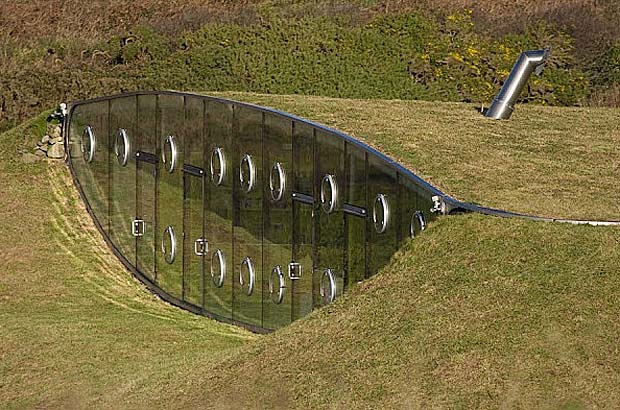Heating & Cooling
Traditional homes have to be heated on a constant basis during
the cold months. Whether the heating is done with wood, coal,
gas or electric the costs go up every year. And as the world tries
to become greener and save its valuable resources some of these
heating methods will either become harder to get or become unavailable
at all. And the cooling costs always follow this same pricing
method.
|
There are homes however that are not as
susceptible to the outside elements as the traditional houses
are. These homes are underground and they have a lot of
advantages compared to their above ground counterparts.
|
 Furnace
Furnace |
Underground homes are not exposed to the wild temperature swings
that have been taking place. Underground homes are a great shelter
against strong winds and server storms. Underground homes are
also more fire resistant because they are made from concrete and
steel and as well use the surrounding soil as a form of insulation.
With this type of underground construction heating and cooling
underground homes does not cost as much as it would a traditional
home above ground. Being down under the earth and also being insulted
by the earth around is a great way to hold the inside temperature
while keeping the outside temperature away. The ground has a stable
temperature after a certain depth has been reached. Using this
stable temperature will allow the underground home to have an
inside temperature that is easier to control.
An underground home will require little to no air conditioning
during the warmer months. As well the heating bill will be minimized
during the cold months. In short heating and cooling underground
homes is relatively inexpensive. An underground house's temperature
will not drop below fifty degrees on average. It really doesn't
take much to increase a temperature from fifty degrees to a higher
temperature.

Ventilation is important for an underground or earth berm home
Heating could consist of an electric space heater running just
for a short time. Traditional electric, natural gas or propane
heaters may also be used. Proper ventilation is the key for any
of these types of system. For those wanting to go off-grid, solar
panels can be used to supply electricity for heating along with
a battery system for storing energy at night.
In regard to cooling an underground home, usually all that is
needed is proper air flow and ventilation. Air heat exchangers
can be of use to underground homeowners for the combination of
heating, cooling and ventilation.
Underground homes are a very sound housing investment. They are
a safe spot from many weather conditions that nature can throw
at a homeowner. They are less costly to heat during the cold months
due to having the earth around them for insulation. And they are
less costly to cool in the warmer months because of the same earth
around them is used as insulation.
|

